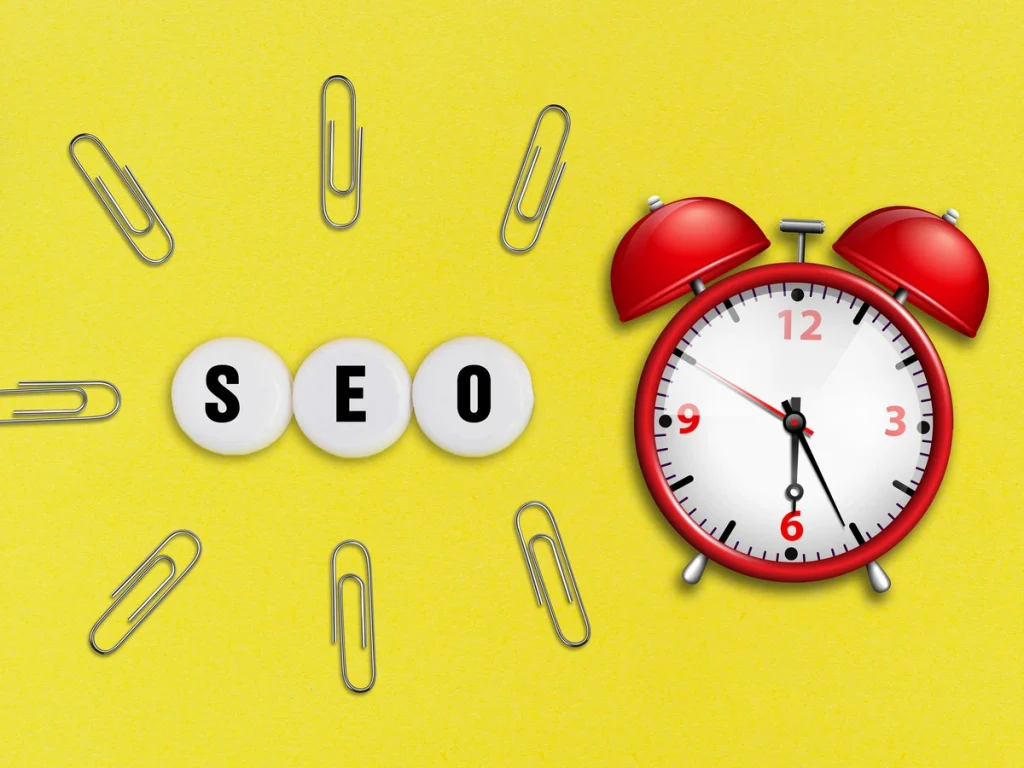Have you ever come across a cool product online, a meme with no context, or a random photo and thought, “Where is this from?” or “What even is this?”
Yeah, same. That’s where Google Image Search seriously comes in clutch.
But Google Image Search isn’t just some side feature for visual learners or curious scrollers — it’s actually one of the most slept-on SEO power plays out there. Real talk: those images you casually upload to your blog, store, or portfolio? They could be showing up in search, getting clicked, and sending traffic your way — if you know what you’re doing.
So in this post, we’re pulling back the curtain on how Google Image Search actually works, why it’s way more powerful than most people think, and how you can start using it to grow real traffic — no keyword stuffing, no boring hacks, just smart image SEO that actually works.
So, What Exactly is Google Image Search?
At its core, it’s a tool from Google that lets you search the web using pictures instead of just words. Instead of typing in keywords like “cute puppies” or “red sneakers,” you can actually upload an image—or even paste a picture’s URL—and Google will find matching or similar images for you.
There are two main ways to search: the usual keyword search, where you type what you’re looking for, and the image-based search, which is the real game-changer. With image-based search, Google analyses the photo itself—its colors, shapes, and patterns—to track down other places that the image appears or find visually similar pictures.
There’s also reverse image search — where you upload or paste a picture, and Google tells you where it appears online. Cool, right?
These images don’t just live in the “Images” tab. They also show up in regular search results, especially for how-to guides, products, recipes, and more. So if your images are showing up, your site might get clicked even before the top-ranked blog post.
Why Should You Care About Image SEO?
Because Image SEO is not optional anymore, it’s one of the easiest ways to stand out, especially when everyone else is stuck obsessing over keywords and backlinks.
Here’s a wild stat — according to recent data, over 20% of all Google searches end up on Google Images. That’s billions of people who are skipping the regular search results and clicking straight on pictures.
And those clicks? They don’t just stay on Google. If your image is linked to your site, people are actually visiting.
- This is huge for visual-heavy niches like:
- Fashion (think “Y2K outfit ideas”)
- Food blogs (hello, “aesthetic breakfast recipes”)
- Tech and gadgets (product close-ups = click magnets)
- DIY or crafts (tutorials pop off visually)
- Tutorials and how-tos (step-by-step images = SEO gold)
If your image shows up, it’s like having a second door into your website. And most people aren’t optimising their images at all. So while everyone else is fighting over the top three text results, you can sneak in through the visual side and grab that traffic with way less competition.
More visibility → more clicks → more traffic.
Simple as that.
How Does Google Actually Rank Images?
Google isn’t a mind reader — and it definitely doesn’t have eyes. It can’t see your image the way a human does. Instead, it reads clues from the stuff around the image to figure out what it’s about.
So, how does your image end up ranking in Google Search? It’s all about the combo — kind of like the secret sauce. Here’s what goes into it:
File Name
Before you even upload the image, name it something that makes sense. Not “IMG_0837.jpg” — try “fluffy-pancakes-with-berries.jpg.” It’s a tiny step, but it helps Google get context fast.
Alt Text
This is the short description that shows up if an image doesn’t load, and it’s used by screen readers for accessibility. But it’s also SEO gold. Describe what’s in the image as clearly as possible, like “Stack of pancakes with strawberries and blueberries on top.”
Page Relevance
Google wants to know: Does this image actually belong on this page? If your blog post is about workout routines, a picture of a pizza isn’t gonna help you rank. Keep your visuals on-topic.
Image Size & Format
Big, heavy images slow down your site — and slow sites don’t rank well. Fast-loading images improve the visitor experience. Use compressed formats such as WebP or JPEG to keep file sizes small and ensure your images perform well on any device.
Surrounding Text
Google reads the stuff around the image — captions, headings, even the paragraph right before or after. Make sure your content supports what the image is about.
How to Optimise Images for SEO?
Now let’s talk strategy. Here’s how you turn basic pics into traffic magnets:
Use Smart File Names
Instead of uploading “IMG00341.jpg,” rename your file to something like “chocolate-cake-recipe.jpg.” That tells Google what’s on the image.
Add Alt Text (Seriously, Do It)
Alt text is like a secret caption. If someone can’t see the image (like with screen readers), this is what they hear. But it also helps Google understand the image.
Keep it simple: “A chocolate cake with strawberries on top.”
Pick the Right Format
- JPEG = best for photos
- PNG = best for graphics with transparent backgrounds
- WebP = smaller file size + fast loading
Compress Your Images
No one likes slow websites. Optimise your images effortlessly with trusted tools such as TinyPNG, Squoosh, and ImageOptim. They compress files effectively without sacrificing the clarity your audience expects.
Add a Caption or Surrounding Text
Google checks the words around your image, too. A short caption or a relevant sentence nearby helps.
Make Sure It’s Mobile-Friendly
Your images should look great and load fast on phones. Test your page on mobile and fix anything that looks off.
Original Beats Stock Every Time
Stock photos are fine, but original images (even ones snapped with your phone) rank better. They’re unique, and Google loves that.
Reverse Image Search & Competitive SEO
Okay, so you’ve uploaded awesome images and optimised them like a pro. Now it’s time to flip the script and use Google Image Search as a tool — not just for traffic, but for strategy.
Here’s where Reverse Image Search comes in. You can literally upload or paste a link to an image, and Google will show you all the places it’s being used across the internet. This is fire for a few reasons:
1. Spy on Where Your Images Are Being Used
If you’ve created original content — like product photos, infographics, or blog graphics — you might be shocked to see how many other websites are using them without asking. If they’re not giving you credit or linking back? That’s a quick win. Hit them up for a backlink.
2. Find Sites Linking to Similar Images
Search an image that’s similar to your content and see which websites are using it. These sites already publish similar stuff, so there’s a solid chance they’d be open to linking to your post or featuring your product. It’s basically free outreach research.
3. Get Ideas from Your Competitors
See how top-ranking blogs or brands are using images. The visuals they use. What style works? What’s in their alt text? It’s not copying — it’s levelling up by learning what’s already winning.
Reverse image search isn’t just for finding catfish — it’s a smart way to stay ahead in the SEO game.
Hidden Opportunities with Google Lens
Let’s talk about something that feels lowkey futuristic but is happening right now: Google Lens.
If you haven’t used it before, Google Lens lets you point your phone at anything — a sneaker, a book, a random product in Target — and Google will instantly try to identify it, find similar images, and suggest places to buy it. It’s visual search gone real-world.
And this ties directly into image SEO.
If your product or blog image is optimised well — clear file names, descriptive alt text, fast loading — it could show up when someone scans something like it in real life. Imagine someone spots a cool pair of earrings at a party, scans them, and ends up in your store. That’s next-level traffic you didn’t even have to fight for in search rankings.
Google Lens is growing fast. It’s already built into Android devices, Google Search, and even iPhones via the app. So if you’re sleeping on this? You’re missing out on a whole new stream of discovery.
Optimise your images like someone might scan them in the wild. Because now… they actually can.
Real-Life Wins
Food Blogs Traffic Usually Jumps by 30%
That’s why the food bloggers update their recipe images — rename the files, add solid alt text, compress them, and place them near relevant content. Traffic from Google Images goes up. No new posts. Just better images. That’s how powerful small changes can be.
Online Stores Rank Through Images First
New eCommerce brands selling handmade jewelry don’t break into the top 10 in regular search results. But their product photos are fire — high-quality, well-labeled, fast-loading. Guess what? Their listings start showing up in Google Image Search first, and that’s how they start getting traffic and sales while waiting for their main pages to rank.
Final Thoughts
Let’s be real: image SEO isn’t just some “extra” thing for bloggers and tech nerds — it’s essential if you want to get noticed in 2025 and beyond.
Google is getting more visual, more mobile, and more search-savvy by the day. If your images are ignored, slow, or just badly labelled, you’re missing out on traffic that could’ve been yours with barely any extra work.
Boost your traffic with image SEO
Google needs help understanding your images. Put in the effort to give your page what it truly needs — from strong keywords to valuable content — and you’ll be well-positioned to climb the search rankings.
Start optimising your visuals today and turn every picture into a traffic magnet.
Need help?
Get in touch with the team at Anika Digital — we’ll help you make your content search-ready and scroll-stopping.



